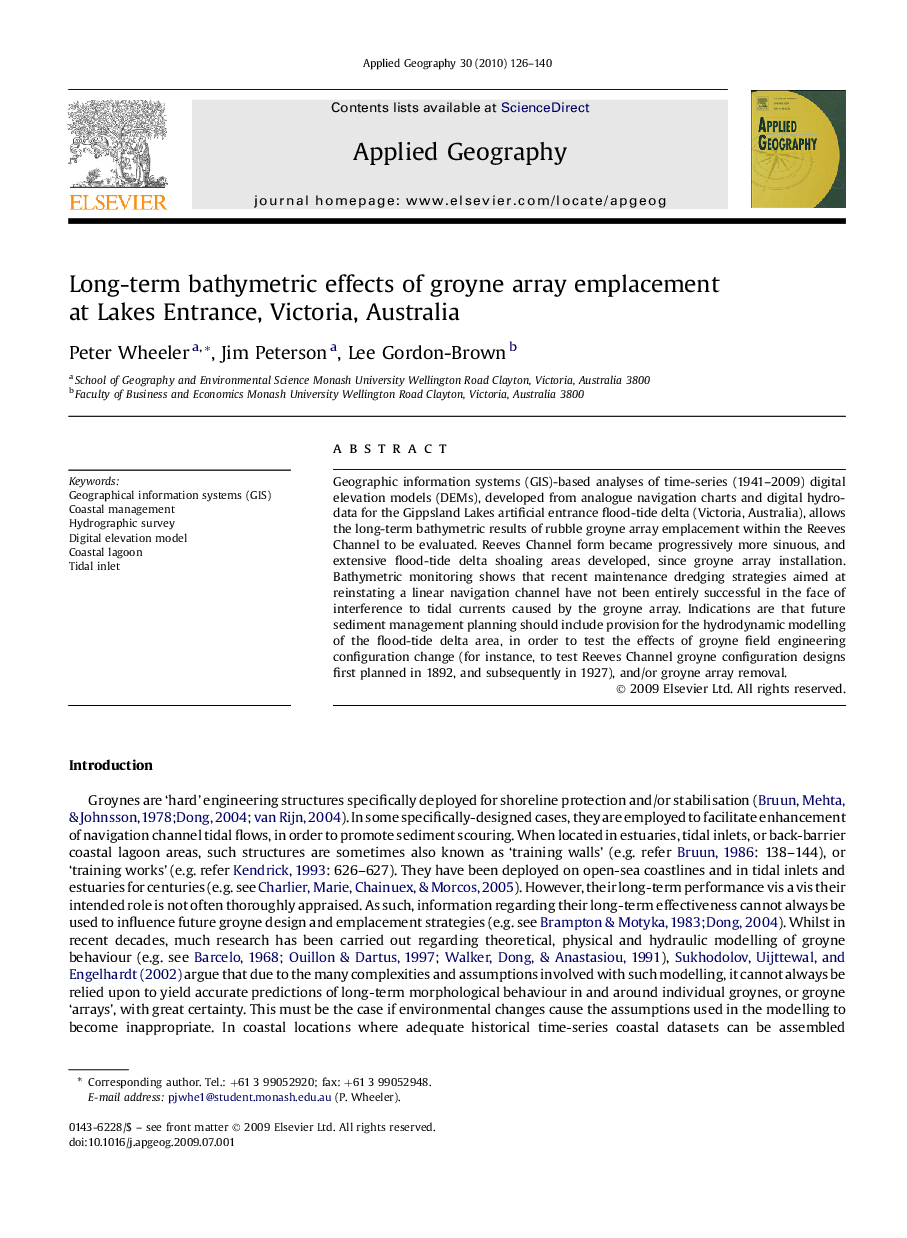| Article ID | Journal | Published Year | Pages | File Type |
|---|---|---|---|---|
| 83807 | Applied Geography | 2010 | 15 Pages |
Geographic information systems (GIS)-based analyses of time-series (1941–2009) digital elevation models (DEMs), developed from analogue navigation charts and digital hydro-data for the Gippsland Lakes artificial entrance flood-tide delta (Victoria, Australia), allows the long-term bathymetric results of rubble groyne array emplacement within the Reeves Channel to be evaluated. Reeves Channel form became progressively more sinuous, and extensive flood-tide delta shoaling areas developed, since groyne array installation. Bathymetric monitoring shows that recent maintenance dredging strategies aimed at reinstating a linear navigation channel have not been entirely successful in the face of interference to tidal currents caused by the groyne array. Indications are that future sediment management planning should include provision for the hydrodynamic modelling of the flood-tide delta area, in order to test the effects of groyne field engineering configuration change (for instance, to test Reeves Channel groyne configuration designs first planned in 1892, and subsequently in 1927), and/or groyne array removal.
